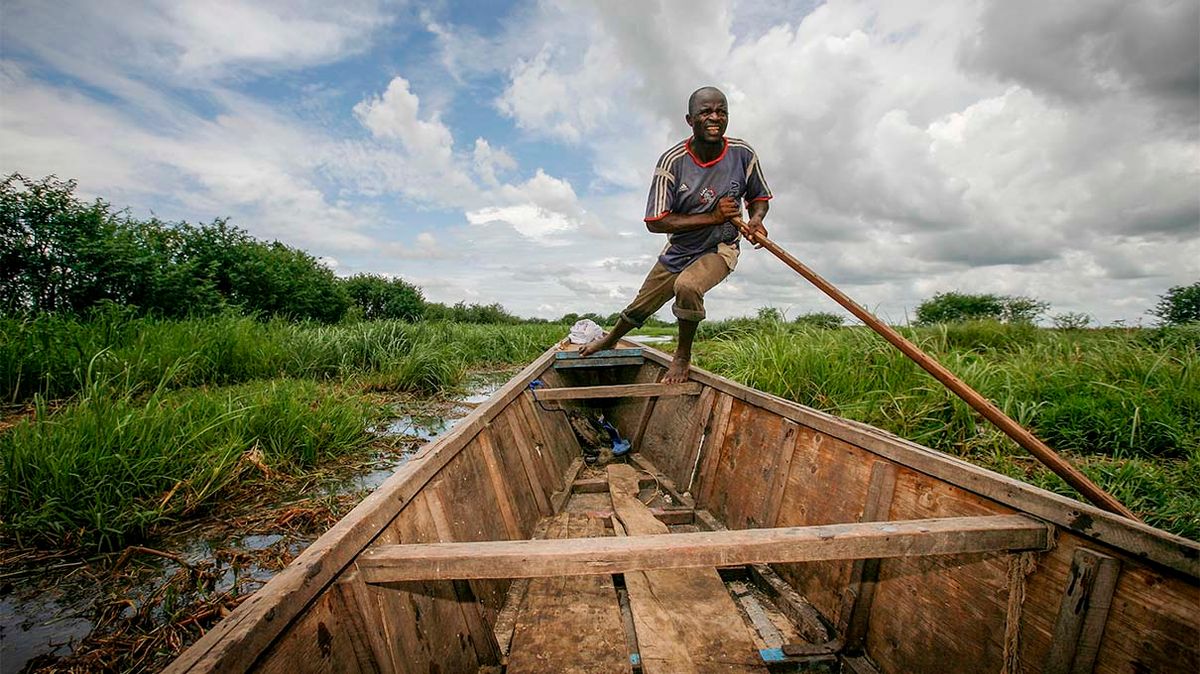
The Sahara Desert in northern Africa is apparently determined to keep its title as world’s largest hot desert. It has expanded by about 10 percent in the past century, according to a study by researchers at the University of Maryland published March 29, 2018, in the Journal of Climate. (Why hot desert? Because the Arctic and Antarctic are cold deserts, and they are larger in area than the Sahara.)
To qualify as a desert, a region has to see 4 inches (100 mm) or less of rainfall per year. Researchers looked at rainfall data from across Africa recorded between 1920 and 2013. They found that more of the area around the Sahara — about 10 percent more — qualified as desert, making the largest hot desert even larger.
This is the first paper published that examines rainfall trends in the Sahara across a century. The scientists were able to infer from the data and climate models that about two-thirds of the desert’s expansion was due to natural changes, while the other third was likely due to man-made climate change.
At the southern border of the Sahara lies a semi-arid grassland known as the Sahel. It’s kind of a buffer zone between the harsh Sahara and the fertile savannas in southern Africa, particularly Sudan and Chad. Lake Chad, for example, has been getting smaller due to climate fluctuations and because its used to irrigate crops. The lack of rainfall does not help the situation.
“The Chad Basin falls in the region where the Sahara has crept southward. And the lake is drying out,” Sumant Nigam, senior author, explained in the study. “It’s a very visible footprint of reduced rainfall not just locally, but across the whole region.”
The study also points out that it’s probably not just the Sahara that’s expanding. Deserts around the world are likely experiencing the same climate changes and growing larger as well. Deserts are all formed pretty much the same way: Warm air rises in the tropics, which are near the equator, then spreads toward the poles. The air current drops down again over the subtropics, where it warms up and dries out. Voilà — desert. This is known as the Hadley cell, and climate change is making the subtropical band wider. That means the region where deserts can form or expand is wider too.

READ MORE
How do you calculate disposable income?
Disposable income is the biggest factor in determining a debtor’s ability to repay creditors. David [...]
Timeline of the Spanish Civil War
© Everett Historical/Shutterstock.com May 17, 1902 Sixteen-year-old Alfonso XIII is crowned king of Spain. The [...]
Exoplanets true to size: New model calculations shows impact of star’s brightness and magnetic activity
Stars with low magnetic field strength exhibit a more pronounced limb darkening than those with [...]
Novel technique for rapid detection of neurodegenerative diseases like Parkinson’s and chronic wasting disease
University of Minnesota Twin Cities researchers have developed a groundbreaking new diagnostic technique that will [...]
Climate Activist Greta Thunberg Wants More Results, Less Politics
Climate activist Greta Thunberg gives the final speech in Milan during the Fridays for Future [...]
This Pacific Coral Can Withstand Warming Waters With the Help of Algae
Antler coral can host different types of algae, sometimes resulting in differences in color. Thomas [...]
How Dietary Supplements Work
The U.S. market for dietary supplements is over $19 billion. BSIP/UIG/Getty Images Chances are good [...]
Genes Make Some People More Attractive to Mosquitoes
An Aedes aegypti mosquito stops for a quick bite. CDC/PHIL/CORBIS Are you a human mosquito [...]